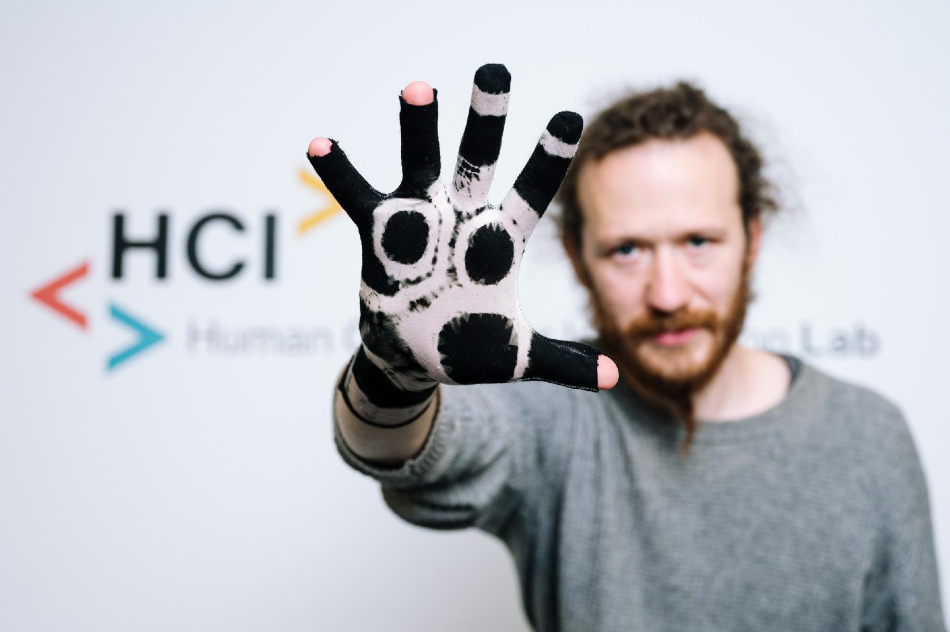Oct 14 2020
At Saarland University, computer scientists have demonstrated how special textiles can be created through a relatively easy method, thus paving the way for new use cases.
 A polymerized glove that can be used to digitally capture hand movements. Image Credit: Oliver Dietze.
A polymerized glove that can be used to digitally capture hand movements. Image Credit: Oliver Dietze.
Our goal was to integrate interactive functionalities directly into the fibers of textiles instead of just attaching electronic components to them.
Jürgen Steimle, Computer Science Professor, Saarland University
His research team on human-computer interaction at Saarland Informatics Campus has been exploring how computers and their operation can be combined as effortlessly as possible into the real-world. This includes the application of electro-interactive materials.
Earlier methods for manufacturing these textiles are complex and impact the haptics of the material. The new approach enables the conversion of garments and textiles into e-textiles, without impacting their original properties—they stay thin, supple, and stretchable. This creates new possibilities for rapid and multipurpose experimentation with new forms of e-textiles and their incorporation into IT devices.
Especially for devices worn on the body, it is important that they restrict movement as little as possible and at the same time can process high-resolution input signals.
Paul Strohmeier, Project Initiator and Researcher, Steimle’s Research Group, Saarland University
The Saarbrücken researchers have been employing the in-situ polymerization process to realize this.
The process involves “dyeing” the electrical properties into the fabric: a textile undergoes a chemical reaction in a water bath, called polymerization, which renders it electrically conductive and sensitive to stretching and pressure, imparting so-called piezoresistive properties to the textile. The computer scientists can create tailored e-textiles by “dyeing” only specific areas of a textile or polymerizing separate threads.
The team, in its test runs, has created gloves that can digitally pick up hand gestures, a zipper that conveys different electric currents based on the degree of opening, and sports tapes that serve as user interfaces that are stuck to the body.
Moreover, this process can be used to treat materials other than textiles. Audrey Briot, an artist from Paris, has developed an evening gown with touch-sensitive feathers that create sounds through a computer upon touching. The feathers were polymerized by her using the technique developed by the Saarbrücken computer scientists. The dress was chosen for the STARTS Prize of the European Commission.
A scientific paper describing the process titled “PolySense: Augmenting Textiles with Electrical Functionality using In-Situ Polymerization” was written by the Human-Computer Interaction Research Group at the Saarland Informatics Campus at Saarland University.
Participating scientists from Saarland University were Prof. Dr. Jürgen Steimle, Dr. Paul Strohmeier, Dr. Marc Teyssier, and Dr. Bruno Fruchard. Also involved were Cedric Honnet (MIT Media Lab), Hannah Perner-Wilson (Kobakant), and Dr Ana C. Baptista (CENIMAT/I3N, New University of Lisbon). The paper was recently published at the world’s largest conference in this field of research—the “ACM Conference on Computer-Human Interaction (CHI).”
Journal Reference:
Honnet, C., et al. (2020) PolySense: Augmenting Textiles with Electrical Functionality using In-Situ Polymerization. ACM. doi.org/10.1145/3313831.3376841.